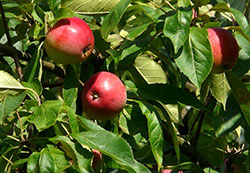
Woody plants naturally enter a period of dormancy or “winter rest.” This process is key to woody plant survival in cold climates. Dormancy develops gradually within buds as the days become shorter in late summer. Dormancy accelerates in the fall, and reaches its peak in early winter. In most woody plants, dormant buds not only prevent shoot growth, but also slow root and other growth. Following early winter and a certain period of cold, buds enter a new stage of dormancy termed “quiescence.” Quiescent buds grow when the weather gets warm.
The term hardening refers to cultural practices that influence the development of dormancy in late summer and fall. Low levels of nitrogen and water in late summer favor early dormancy. Compatibility problems arise where lawns and trees are both grown. Fertilizing in August tends to delay hardening of trees and shrubs. Fertilizing later produces the grass-root growth and food storage required for the coming winter months. If you live along Colorado’s Front Range, it’s best to fertilize your lawn in late September or October.
Reduce lawn watering in late summer to help trees make a timely entry into dormancy. But be sure to water in the fall and winter to recharge soil moisture and to help avoid root damage.
For more information, see the following Planttalk Colorado™ video(s).+
For more information, see the following Colorado State University Extension fact sheet(s).



